The Intertwining History of NOW and the ERA
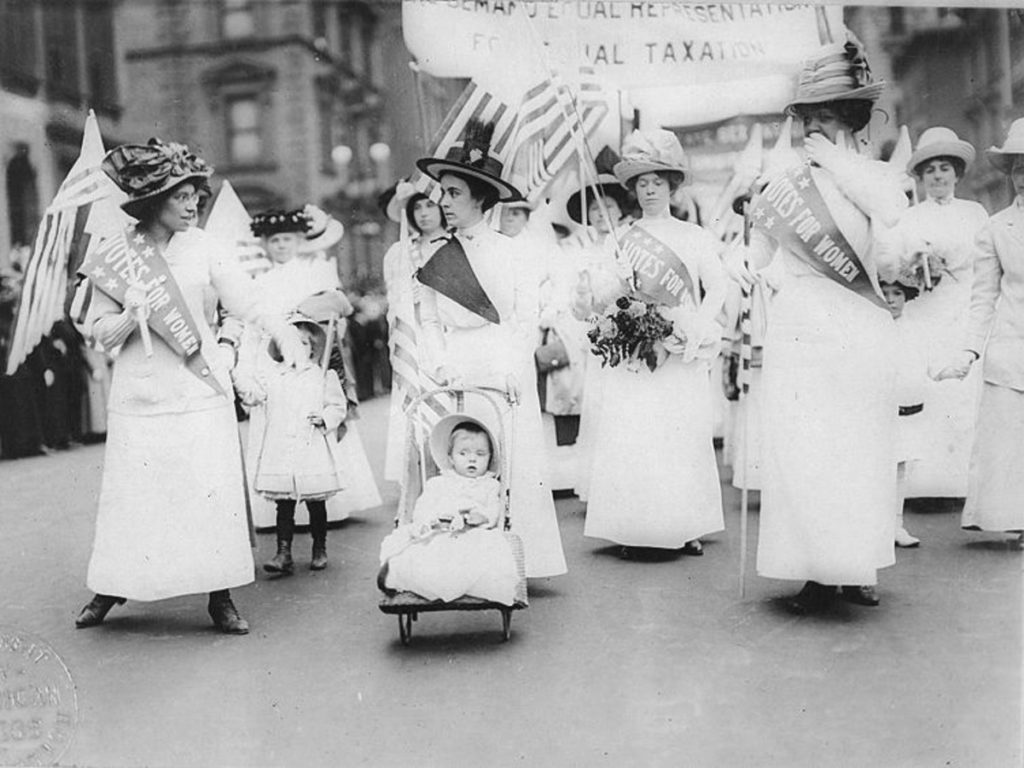
1920s-40s
- 1921: The National Woman’s Party (NWP) announced their intention to campaign for an amendment to the U.S. Constitution to guarantee women equal rights with men and proposed a brief text.
- 1923: Alice Paul, the famed suffragist, and leader of the NWP, along with feminist lawyer/activist Crystal Eastman, wrote text for the amendment known as the Lucretia Mott Amendment. It states: “Men and women shall have equal rights throughout the United States and every place subject to its jurisdiction. Congress shall have the power to enforce this article by appropriate legislation.”
- 1943: Paul revises the text to reflect the text of the Fifteenth and Nineteenth Amendments. The Equal Rights Amendment now reads:
- Section 1: Equality of rights under the law shall not be denied or abridged by the United States or by any State on account of sex.
- Section 2: The Congress shall have the power to enforce, by appropriate legislation, the provisions of this article.
- Section 3: This amendment shall take effect two years after the date of ratification.
- The ERA is introduced in Congress every succeeding session, with little success until in the 1970s.
1960s

- In 1966, NOW is founded and the fight for equal rights for women begins
- In 1967, one year after NOW forming NOW adopted a resolution of support for the Equal Rights Amendment (ERA) at the second NOW conference, and ever since it has remained one of our core issues.
- In 1968, at NOW’s second national conference, members adopt a Bill of Rights which enforced the prohibition against employment discrimination under Title VII of the Civil Rights Act of 1964, maternity leave rights and in Social Security benefits, tax deduction for home and child care expenses, child daycare centers, equal education, equal job training opportunities and allowances for women in poverty, reproductive rights, and of course, the Equal Rights Amendment.
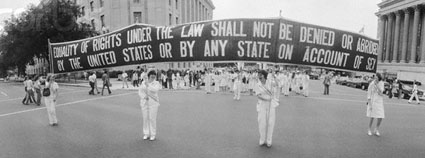
1970s
- In February of 1970, 20 NOW leaders disrupted hearings of the U.S. Senate
- Subcommittee on Constitutional Amendments, demanding that the ERA be considered by the full Congress.
- May 1970: A hearing on the proposed amendment is held, with NOW president Aileen Hernandez and NOW member U.S. Rep. Shirley Chisholm (D-N.Y.) testifying in support.
- October 12, 1971: With extensive lobbying, the ERA passes the U.S. House of Representatives was secured (354-24).
- March 22, 1972: The Senate follows and approves the ERA by an 84-8 vote without changes. Unfortunately, an artificial timeline was included in the preamble of the Act, setting a date of March 22, 1979. (Some legal analysts have asserted that Article V of the Constitution does not permit the imposition of deadlines on the ratification process.)
- Congress sends the ERA to the states for ratification. Ratification by three/fourths (38) of the states is required by Article V of the Constitution.
- NOW state and local chapters pressed state legislatures to ratify the ERA and a rapid succession of states follow suit. By 1977, 35 states have ratified, leaving the Amendment short of three states in meeting the required three-fourths of the 50 states for ratification. The fifteen unratified states were primarily in the more conservative states, including Alabama, Arizona, Arkansas, Florida, Georgia, Illinois, Louisiana, Mississippi, Missouri, Nevada, North Carolina, Oklahoma, South Carolina, Utah, and Virginia.
- NOW chapters rallied and successfully help to elect pro-ERA legislative candidates in many states, but ultimately did not get additional ratifications.
- An ERA opposition movement emerged at this time, fueled and funded by conservative religious groups as well as insurance companies and other corporate interests. They spread false claims about what the ERA would do, such as sending women into combat and repealing employment laws protective of women. Fronted by the outspoken conservative, Phyllis Schlafly, their campaigning was successful enough to slow down momentum for ratification.
- A number of states voted to rescind their earlier ratification votes. However, Article V of the U. S. Constitution does not provide for rescission – ratification is final.
- In 1977, NOW advocated for a boycott of ungratified states and gathered even more public support for the Amendment. The number of pro-ERA groups grew to more than 450 organizations representing more than 50 million Americans.
- NOW leaders sought a five-year extension from Congress for the ratification deadline with the argument that the U.S. Constitution imposes no time limit for ratification of amendments.
- Alice Paul dies in 1977, at age 92.
- In 1978, the state of Missouri brought a lawsuit on antitrust grounds against NOW, claiming the organization violated the Sherman Antitrust Act by urging groups to boycott unratified states and hold conventions only in ratified states.
- The NOW national board declared a State of Emergency on the ERA. On July 9, 1978, NOW organized an ERA extension march of 100,000-plus supporters in Washington, D.C. This March for Equality was the largest in feminist history at the time. Both the U.S. House and Senate then approved ERA extension with a new deadline of June 30, 1982.
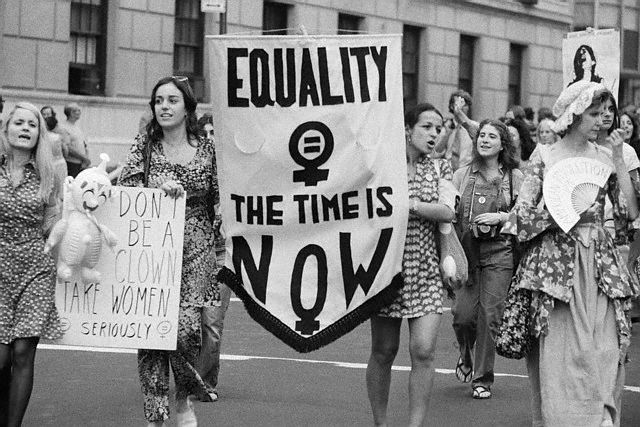
- In 1979, states debated rescission bills and a dozen such bills were defeated.
- Federal Judge Elmo Hunter, of the District of Eastern Missouri, ruled in the ERA boycott case that NOW’s activities are protected by the First Amendment and do not violate the Sherman Antitrust Act.. This is upheld by the U.S. Court of Appeals. The U.S. Supreme Court in late 1980 declines to hear the case. The ERA boycott is legal.
1980s
- NOW organizes 85,000 activists in 1980 to march in Chicago in support of Illinois ratifying the ERA.
- The Republican Party reversed its 40-year tradition of supporting the ERA. In response, NOW organized 12,000 supporters to march in Detroit during the Republican National Convention. The final Republican platform officially took no position on ERA, but presidential nominee Ronald Reagan and party officials actively opposed the Amendment. The Democratic Party reaffirmed its support for ERA and the ERA boycott.
- Election day exit polls in 1980 showed that for the first time ever reported, men and women voted quite differently. Pollsters later indicated that for women the issue of women’s rights and ERA had a significant impact on their votes. News reports claim “Ronald Reagan has a woman problem” related to the ERA.
- NOW organized approximately 40,000 ERA supporters to remind the new President Reagan of the overwhelming pro-ERA sentiments in the nation.
- NOW sends ‘Feminist Missionaries’ to Utah, the heart of the opposition to ERA, and the headquarters of the Mormon Church and to other unratified states.
- NOW files a $10 million lawsuit against the Attorney General of Missouri charging that he intentionally injured NOW, the ERA campaign, and the women’s rights movement by suing NOW for its convention boycott of states which had not ratified the ERA.
- NOW sponsored ERA Countdown Rallies in more than 180 cities to draw attention to the deadline of June 30, 1982, and to dramatize wide support for the ERA. The “Last Walk for ERA” raises close to a million dollars.
- NOW launches the first nationwide advertising campaign for ratification of the ERA, focusing on the problem of widespread sex discrimination.
- U.S. District Court Judge Marion J. Callister, of the District of Idaho, ruled the ERA extension illegal and rescission legal in the case of Idaho v. Freeman. This ruling marks the first time in this country’s history that an Act of Congress relating to the process for amending the U.S. Constitution was declared unconstitutional by a federal court. NOW immediately appealed the ruling to the Supreme Court and asked for an expedited hearing. In early 1981, the Supreme Court vindicated NOW’s position by entering a rarely granted unanimous stay prohibiting the enforcement of Callister’s decision.
- In January 1982, The Court agreed to hear NOW’s appeal on the merits of the case at a later date, thereby negating any legal effect of Callister’s decision and removing the cloud of confusion on ratification in the states. But as the deadline for ratification passed on June 30, the question became moot.
- By the 1982 date, only 35 of the necessary 38th states had ratified and many believed the ERA to be a lost cause. But advocates would not be deterred.
Seven NOW members held a dramatic 37-day hunger fast in Illinois Legislature in May 1982, resulting in several hospitalizations — but to no avail for a successful ratification vote. On June 30, ERA progress stopped three states short of ratification. ERA supporters pledged “We’ll Remember in November.” - An analysis of ERA votes in four targeted states showed that the Republicans deserted the ERA and Democratic support was not strong enough. The single most obvious problem was the extreme gender and racial imbalance in the legislatures: more than 2/3 of the women and all of the African American lawmakers voted for ratification, but less than 50 percent of the white male members in the targeted legislatures cast pro-ERA votes in 1982.
- In 1983 and every year thereafter, the ERA has been officially reintroduced in the U.S. Congress. Rep. Carolyn Maloney (D-NY.) and the late Sen. Ted Kennedy (D-Mass.) routinely introduced the bills.
1990s-Early 2000s
- In the 1990s and 2000s, a number of approaches were advocated, including new language for the ERA that specified women as the ones most often discriminated against. The language of 1972 is gender-neutral in its prohibition against discrimination based on sex. Additionally, a bill introduced by Sen. Ben Cardin (D-Md.) and Rep. Jackie Speier (D-Calif.) suggested a three-state solution that would remove the 1972 deadline (simultaneously removing the 1982 deadline as well).
- NOW organized several standing-room-only Congressional briefings over that period to discuss the legislation and the continuing need to have an ERA in our Constitution.
- In the early 1990s, NOW held a conference to explore additional protections that might be included in a new ERA, resulting in a draft that covered a wide variety of protections.
- Since 1995, ERA supporters have advocated for the passage of ERA ratification bills in a number of the 15 “unratified” states, with bills introduced in 12 of those states.
- In 2000, the national NOW conference endorsed multiple strategies aimed at achieving ratification of a constitutional equal rights amendment. NOW’s Political Action Committee, along with state and local PACs and NOW campaign activists continued to work to elect feminist candidates.
- In 2004, NOW Foundation undertook campaigns to register voters, particularly women voters, achieving over seven million voter contacts.
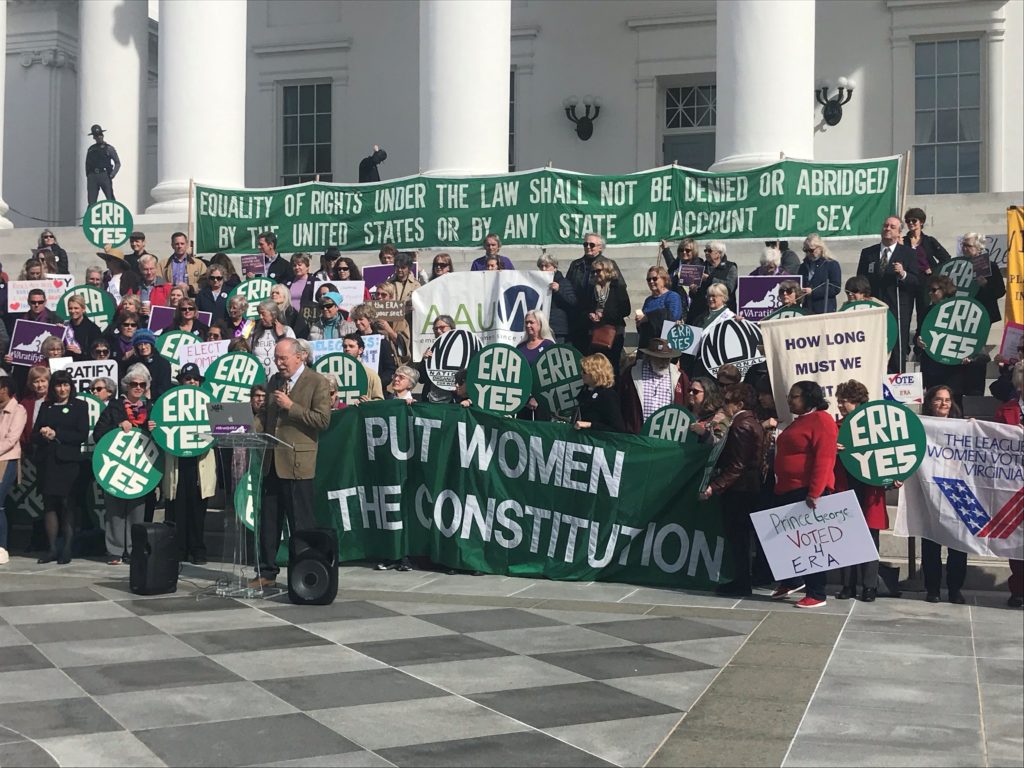
- The Archivist of the United States, who is the responsible party for ratifying the ERA to the Constitution, wrote in a 2012 letter to Rep. Carolyn Maloney (D-N.Y.) that states may not rescind ratification votes: Article V of the Constitution makes no provision for rescission.
2017-2020
- In March of 2017 Nevada ERA activists and their allies produced a stunning ratification victory, jumpstarting the modern day ERA movement. Lead by Nevada State Senator Rev. Pat Spearman and a majority female legislature, who while wearing suffragist white on the Senate floor said:
“Galatians 6:9 says, ‘Be not weary in well-doing, you will reap the harvest if you do not faint,’” she said. “We got tired, but we did not faint. We became weary, but we did not faint. We were vilified, ostracized, and criticized, but we did not faint. I encourage my colleagues to support and pass this legislation. We persist, in the name of all that is good.”
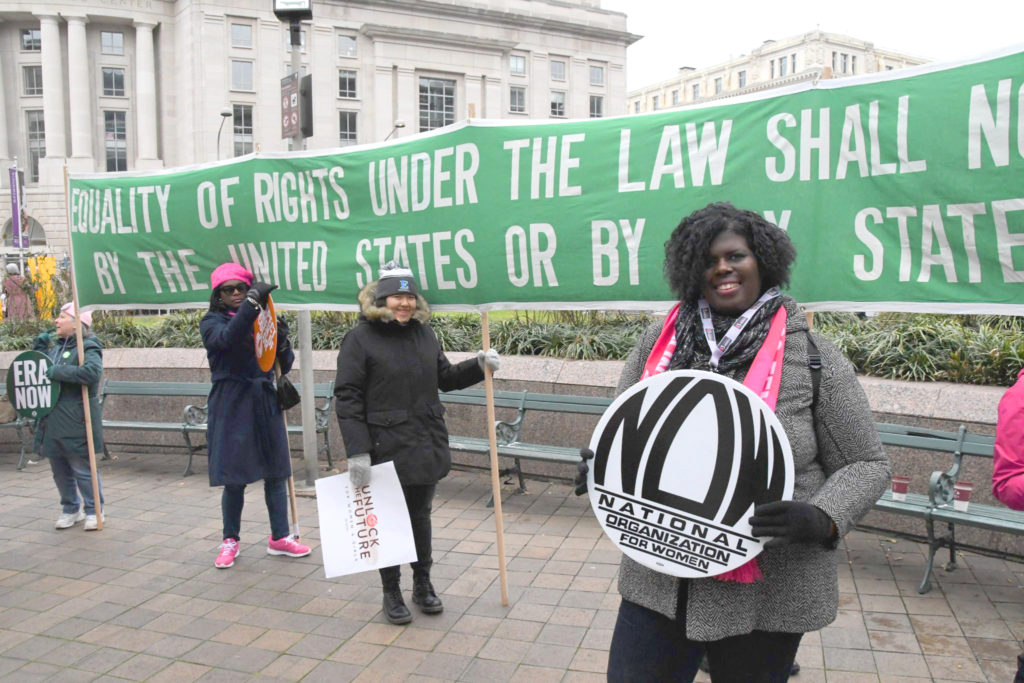
- In May of 2018 with the help of seasoned ERA campaigners from national NOW and Illinois NOW, the state legislature passed the Equal Rights Amendment, leaving just one state left to ratify.
- NOW works with chapter leaders in key states, including Arizona, to raise awareness of the need to ratify the ERA. NOW staff discovers the original Equal Rights Amendment banner first used in the 1970s and marches with it in Illinois and every year since 2016 at the annual Women’s March in Washington, D.C.
- A new organization, the ERA Coalition, sprung into life around this time with an exclusive focus on building widespread support for the amendment. It was founded by international human rights lawyer, Jessica Neuwirth, who also founded Equality Now, and is the author of the topical book, Equal Means Equal. The coalition has grown into more than 100 national and local member organizations and worked diligently to educate the public on the need for the ERA. Former broadcast journalist Carol Jenkins serves as co-president and CEO. The coalition is ably guided through the legal thicket by Linda Coberly Esq. of Winston & Strawn LLC.
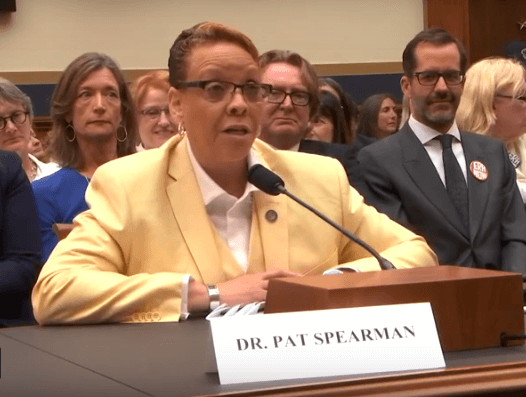
- Over the years, the Virginia Senate had passed a ratification measure five times, but the more conservative House of Delegates failed to follow through. Then in November 2019 national NOW and Virginia NOW worked with the Feminist Majority to get out the vote. This massive effort helped turn both the Senate and the House of Delegates into a progressive pro-ERA powerhouse.
- In mid-December 2019, the attorneys general of three states – Alabama, Louisiana, and South Dakota – filed a federal lawsuit to block the addition of the ERA to the U.S. Constitution. Alabama Attorney General Steve Marshall said “the people had seven years to consider the ERA, and they rejected it. To sneak it into the Constitution through this illegal process would undermine the very basis of our constitutional order.” He also alleged that the ERA would be used to strike down abortion restrictions.
- The ERA was introduced yet again in Virginia. NOW activist and Virginia Delegate Hala Ayala (D), who had fought for the passage of the ERA for over a decade, was the Chief Co-Patron for the Equal Rights Amendment.
- With ERA supporters in both chambers, led by women of color legislators in democrats Sen. Jennifer McClellan and Del. Jennifer Carroll Foy, the state legislature passed a ratification measure making Virginia the 38th and final state needed for the ERA to become part of the U.S. Constitution in January 2020.
- After its vote, Virginia submitted its ratifying documents to the National Archives and Records Administration (NARA), which is responsible for certifying the ERA to the Constitution. However, in January 2020, the Department of Justice (DOJ), Office of Legal Counsel, issued an opinion stating that the deadline for the ERA had expired and that the ERA was no longer pending. NARA said that it would adhere to this opinion.
- The National Archives and Records Administration confirmed it received Virginia’s ratification documentation but said, “The archivist will take no action to certify the adoption of the Equal Rights Amendment,” citing legal guidance from the Justice Department.
- A lawsuit was filed by the attorneys general of the states of Nevada, Illinois, and Virginia on January 30, 2020, against David Ferriero, Archivist of the United States, in an effort to “compel the archivist to carry out his statutory duty of recognizing the complete and final adoption of the Equal Rights Amendment,…”
- The A.G.s asserts that because the deadline is in the preface of the ERA resolution – and not in the text of the amendment—that it is not binding.
- The states of Alabama, Louisiana, and South Dakota dropped their lawsuit and filed to intervene in the lawsuit brought by Nevada, Illinois, and Virginia.
- On February 13, 2020, the U.S. House of Representatives passed H.J.Res.79, which removes the deadline on the ERA ratification, by a vote of 232-183. Action is now needed in the Senate as well for S.J. Res. 6: A joint resolution removing the deadline for the ratification of the equal rights amendment. NOW leaders and members were on hand for this historic moment in the House Gallery at the invitation of Rep. Caroline Maloney.
- In April, the Department of Justice Civil Division filed a motion to dismiss a similar case brought by the group Equal Means Equal.
- On May 9, 2020, it was reported that the Department of Justice’s Civil Division filed a motion to dismiss the three A.G.s case referring to the DOJ’s Office of Legal Counsel memorandum that the deadline to ratify the ERA had expired. The motion also argued that the plaintiffs lack standing because they haven’t alleged a “concrete injury” linked to the actions of the Archivist. The DOJ said that the complaint should be dismissed, “as a failure to state a claim.”
- On July 1, 2020 – NOW and over 50 women’s rights and civil rights organizations filed a joint amicus curiae brief urging the enshrinement of the ERA in the Constitution. The brief was submitted in support of a lawsuit brought by the Attorneys General of Virginia, Illinois, and Nevada – all three states having recently passed ratification measures. Our brief was joined by many other amicus briefs submitted by allies, plus several from opposing organizations.
- NOW and our state chapters continue to push for additional states to pass an ERA ratification measure, including Arizona, North Carolina, and several others.
- Ultimately, the Republican-controlled Senate did not bring up the House-passed ERA time limit removal legislation.
2021
- January 2021 – We are waiting for a decision on ERA certification and inclusion in the U.S. Constitution from the U.S. District Court for the District of Columbia.
- Rep. Carolyn Maloney reintroduces her “start over” Equal Rights Amendment, H.J. Res. 28, joined by Rep. Tom Reed (R-NY); the language of the resolution is different from the traditional ERA in that it specifies that women are the ones discriminated against.
- On March 5, U.S. District Judge Rudolph Contreras dismissed the lawsuit filed by the Attorneys General of the States of Nevada, Illinois, and Virginia, saying that the ratification deadline (seven years extended by three years) of the 1975 ERA resolution remains a deadline – whether it is in the preface or in the actual text of the ERA. Thus, the recent ratifications by the three states should not be recognized.
- Judge Contreras further ruled that the Archivist of the United States publication and certification of an amendment are “formalities with no legal effect” so that the archivist’s failure to do that does not cause harm and there is no standing for the states to sue.
- Virginia Attorney General Mark Herring stated that he is not giving up the fight and is considering an appeal. Nevada Attorney General Aaron Ford issued this statement, “Unfortunately, today’s decision requires women to continue waiting. Though I am disheartened by this decision, all women can rest assured that, regardless of this court’s decision, my fight for your equal rights does not end today, tomorrow, or any day.”
- NOW activists continue to recruit supporters of the time limit removal legislation. NOW’s 28th Amendment Committee and their RATIFY Women NOW Campaign hold virtual meetings during the COVID 19 pandemic and urge activists to get in touch with lawmakers. The committee, under the coordination of Nevada’s Jeri Burton, designs and sends green ERA masks to leaders in the fight for the 28th amendment.
- On March 17, 2021, the U.S. House of Representatives voted 222 – 204, including four Republicans, to approve H. J. Res. 17, (Sponsored by Rep. Jackie Speier with Tom Reed (R-N.Y.)) to remove the ratification deadline from the Equal Rights Amendment. The 1972 resolution which launched the effort to ratify what would be the 28th Amendment to the U.S. Constitution and contained a deadline of seven years, later extended three more years, for ratification by 38 states to be approved.
- A live-streamed press conference with House Judiciary Committee Chair Jerrold Nadler (D-N.Y.), and many women leaders all wearing the ERA white, and sporting NOW’s 28th Amendment Committee’s ERA masks, spoke about their victory and urged the Senate to quickly follow suit.
The language of the ERA time limit removal legislation is as follows:
This joint resolution eliminates the deadline for the ratification of the Equal Rights Amendment, which prohibits discrimination based on sex. The amendment was proposed to the states in House Joint Resolution 208 of the 92nd Congress, as agreed to in the Senate on March 22, 1972. The amendment shall be part of the Constitution whenever ratified by the legislatures of three-fourths of the states.
- The Senate companion legislation, S. J. Res. 1, is again sponsored by Sen. Ben Cardin (D-Md.) (who originated the three-state strategy about 10 years ago), now joined by Sen. Lisa Murkowski (R-Ak.). Advocates are encouraged to reach out to Republican members as the Senate is evenly split and Republicans may threaten a filibuster which would take 60 votes to overcome.
- One alternative to getting the legislation adopted is to modify or fully prohibit the use of the filibuster, a Jim Crow era relic that Republicans have deployed over many years to kill progressive legislation advanced by Democrats. ERA advocates are also urged to contact their Democratic members of Congress and urge that the filibuster problem be addressed.
More Resources: